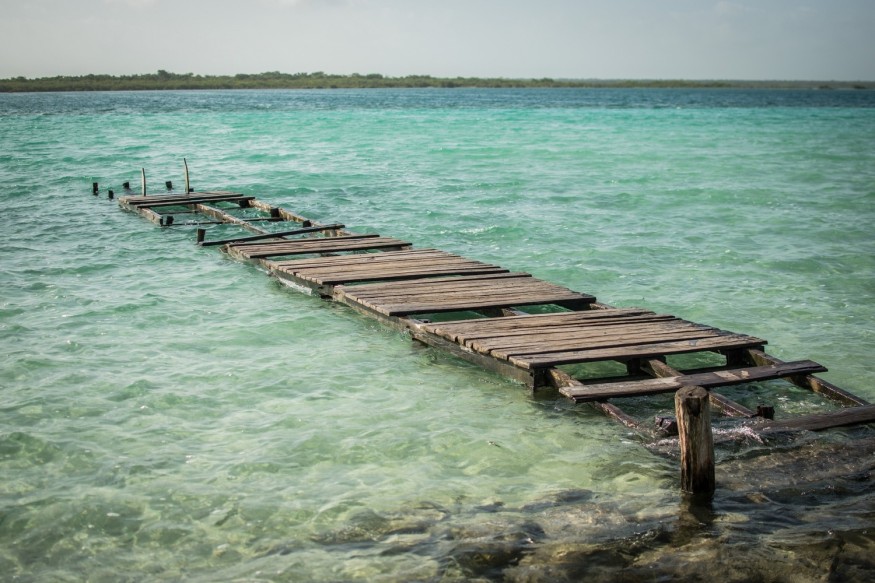A 3.5 billion-year-old lifeform can be found in Lake Bacalar Bacalar, a Mexican lagoon with seven stunning colors of blue.
Claudio Del Valle, a local tour guide, told BBC that the lake is more than simply a classic color with a limestone below. Even tourists could see the beauty when they're paddling through its pure water. It's also home to the planet's oldest life, in the form of old stromatolites, or layered rock as it's known in Greek. Humans, plants, and even dinosaurs, precede this living fossil.
Science Alert said microbial reefs, like stromatolites, are sediments made by blue-green algae that progressively grow up over time, layer by layer. Stromatolites, according to Science Daily, look like a cauliflower while also appearing to be rocks. However, they are actually live organisms. Del Valle claimed the ancient population of stromatolites in the 'Lake of Seven Colors' is in severe danger of extinction, just like what The Ecologist mentioned.

'Lake of Seven Colors' in Danger?
When Del Valle first visited on the Bacalar's lagoon after suffering from post-traumatic stress, he described it as "heaven." She said in the same BBC report that everything was one-of-a-kind. What is occurring today, on the other hand, hurts her heart.
Dr. Luisa Falcón, National Autonomous University of Mexico in Merida's microbial ecologist , mentioned in the BBC report that Lake Bacalar has been heading toward an ecological calamity for the past decade. This covers the time in November 2015 when the lake was placed on a pollution warning by Mexico's federal environmental protection agency.
A report from Paudal mentioned that the issue in the lake arose in June 2020, when its rich thalassic colors faded to a drab brown, which has yet to fully recover. The damage, according to Falcón, is more than just the visual splendor of the vibrantly colored water.
Bacalar's microbialites, she added, ranging in age from decades to more than 9,000 years. The stromatolites, the microbialite's living fossil analog, are "roughly 3.5 billion years old." That makes Bacalar's population the world's oldest underwater lifeform.
History Frozen in Time
According to "Stromatolites in Crater-Lake Alchichica and Bacalar Lagoon," the cauliflower-like stromatolites are regarded "history frozen in time," These items can only be seen in a few places, such as Lake Bacalar. Because they can maintain physicochemical conditions of the water in their 'extremely slow sedimentation process,' their fossils can disclose historical information such as temperature or geochemical composition of the water millions of years ago. Stromatolites are thought to aid in the recycling of elements.
Falcón told BBC karstic environments make these stromatolites vulnerable to upstream change. That is especially that deforestation of the rainforest upstream and unsustainable agricultural practices have 'exponentially' increased, despite the lake being fed by an underground river with carbonate rock that apparently makes them grow larger than normal.
Falcón went on to say that the local tourism business needs proper urban planning, such as adequate sewage treatment and sanitary amenities.
Falcón thinks that greater sustainable tourism would help Lake Bacalar recover and reclaim its image as the "Lake of Seven Colors."
RELATED ARTICLE : Plastic Pollution Could Be Leading Sea Turtles into an 'Evolutionary Trap," Can They Still Avert This Disaster?
Check out more news and information in Climate Change in Science Times.










